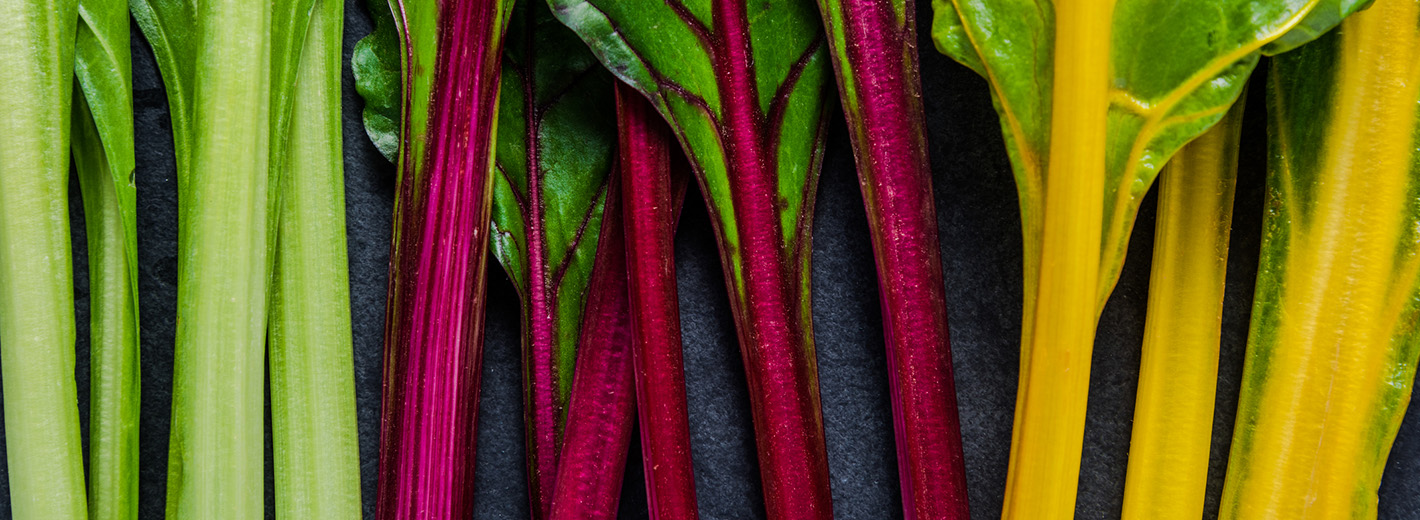
Wellness Tips: Incredibly Edible Stems
- by bonappetit
Many recipes for greens that I come across advise to de-stem them before cooking. Should I do this, or is there a benefit to keeping them?
From kale salads and collard wraps to green smoothies, hearty greens are in the spotlight — and for good reason. Dark, leafy greens are nutrient powerhouses, packing in an array of vitamins, minerals, phytonutrients, and belly-filling fiber, all for very few calories. But, when eaten raw, or without a little love (trust us, your kale will benefit from a massaging), these greens can be bitter and downright hard to chew. And those thick stems don’t help their cause, which is why many recipes recommend de-stemming before eating. But it’s not because the stems are inedible. In fact, they offer the same nutrients as their beloved leaves. Just like massaging those kale leaves makes them more palatable (we say tasty!) by releasing some of the bitterness and breaking down the tough-to-eat fiber, a few kitchen hacks will have you devouring those stems instead of trashing them. (And, we’re fans of anything that cuts food waste)
- Blanch ’em. A brief dip in simmering water will soften the stems and cut the bitterness. From there you can chop and add them to your salad, into a pesto, or sauté with garlic and olive oil.
- Quick pickle: Move over cucumbers, there is a new pickle in town. Stems of any green can be added to a pickling brine of vinegar, sugar, and salt (with optional peppercorns, dill, or other herbs and spices of your choice). Place in an airtight container in the refrigerator for a few days, which will tenderize the stems and infuse them with a burst of flavor.
- Blend in a smoothie: When adding greens to a smoothie there is no need to remove the stems. The blending process will break down some of the fiber and the mixture of ingredients, including fruit (particularly citrus), will cut through the bitterness.
- Braise on the stove: Braising is a slower way of cooking the greens than sautéing, allowing the flavors to develop and the stems to tenderize. You can use water, white wine, broth, or another preferred cooking liquid, along with a little oil and garlic. Add the stems to the pot a few minutes before the leaves to give them a head start. Here’s a little inspiration to get you started.
- Toast ’em crispy: Kale chip fans raise your hand. (*Arms waving*) When making kale “chips,” leave the stems on and they will roast in the oven along with the greens. Or, you can toast your stems on their own if you set them aside when making a kale salad or another recipe. Toss with a little oil, salt, and spices or herbs of your choice. We like to keep it simple with a pinch of garlic powder or a cumin-coriander blend.
With your newfound stem game in the kitchen you’ll no longer have to leave it to the leaves to get the most nutrition out of your greens.
At Bon Appétit, we know there’s a lot on your plate that you worry about. That’s why we have a team of registered dietitian nutritionists ready to answer your nutrition questions about which food choices will help you avoid unwanted pounds, work or study (and sleep!) better, and form long-lasting healthy eating habits. Email your questions and feedback to nutrition@cafebonappetit.com